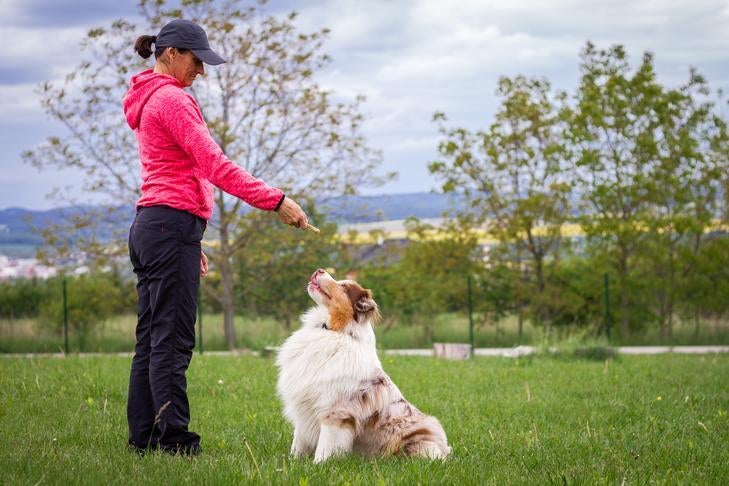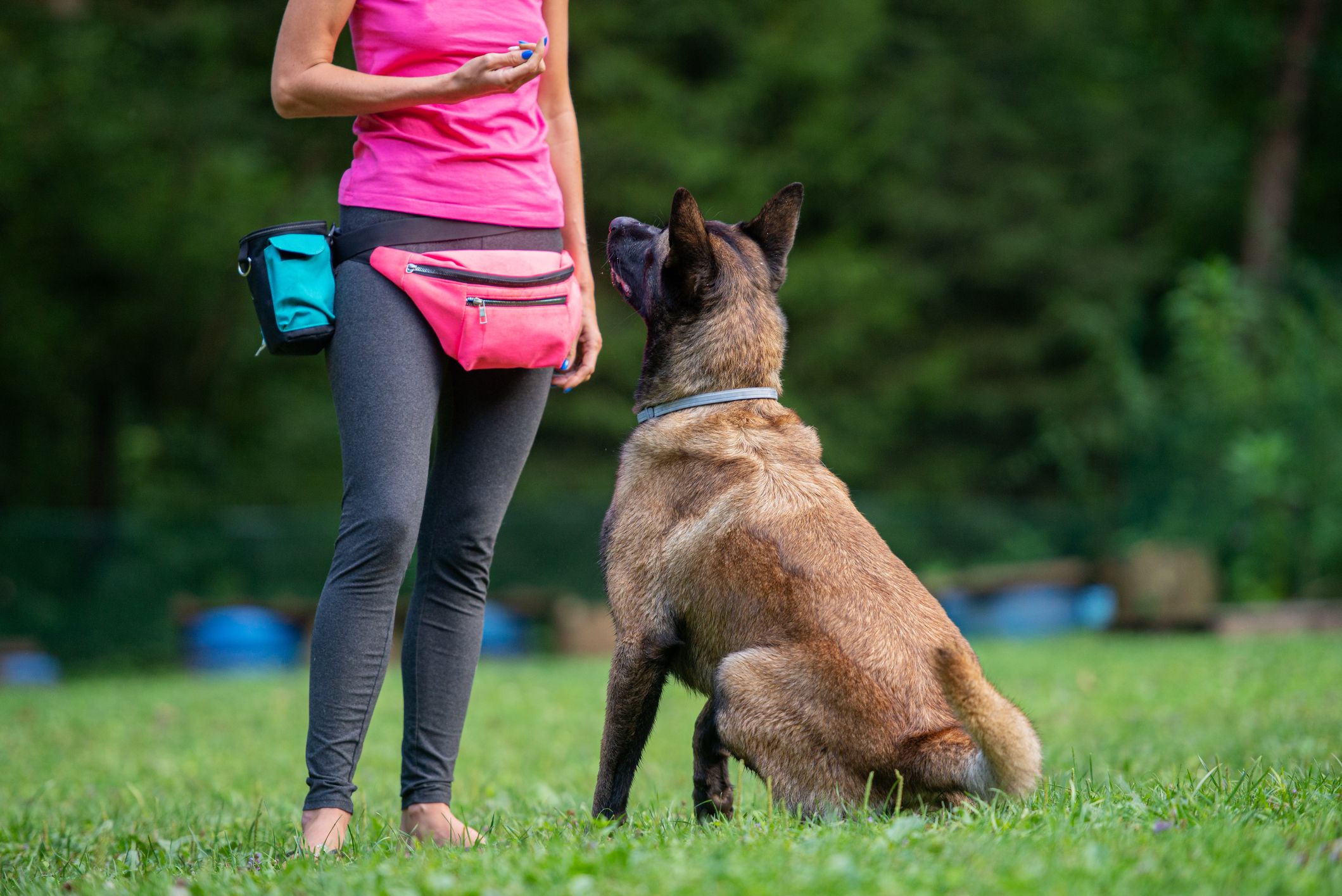The Ultimate Guide to Dog Training: Change Your Animal's Behavior
Efficient dog training is important for fostering an unified connection between family pets and their proprietors. The ins and outs of canine behavior and the application of structured training methods play a vital role in this process. By comprehending the principles of positive support, consistency, and socializing, pet proprietors can navigate common obstacles that arise during training. This guide not only aims to outfit you with the needed tools to change your dog's habits yet additionally invites you to explore just how these foundational principles can bring about a much deeper link with your family pet. What may be the initial step in this transformative journey?
Understanding Dog Habits
Recognizing pet dog actions is essential for reliable training and a harmonious partnership between pet dogs and their owners. A canine's behavior is affected by a mix of genetics, setting, and experiences. Dog training. Recognizing these aspects permits owners to tailor their training approaches to satisfy the individual demands of their family pets
Pet dogs interact mostly through body movement, vocalizations, and faces. A wagging tail can indicate exhilaration or happiness, while a put tail might signal worry or entry. Observing these hints enables owners to react properly, strengthening positive actions and dealing with adverse ones successfully.
In addition, recognizing the social framework of dogs can give insights into their behavior. Canines are pack pets, and they thrive in a structured atmosphere. Establishing consistent regulations and clear limits can protect against complication and advertise a feeling of safety and security.
In addition, recognizing the all-natural instincts of canines, such as the desire to go after or dig, is critical. These instincts can be rerouted through appropriate outlets, such as play or workout. By comprehensively recognizing these behavior aspects, proprietors can foster a positive training experience, eventually resulting in a loyal and well-adjusted canine companion.
Vital Educating Techniques
Reliable canine training counts on a selection of important techniques that can considerably improve the learning procedure for both the pet dog and the proprietor. One fundamental strategy declares support, which involves satisfying desirable behaviors with treats, praise, or play. This technique motivates canines to duplicate the actions that lead to favorable outcomes, fostering a relying on connection in between the pet dog and owner.
An additional trick strategy is consistency in assumptions and commands. Utilizing the exact same verbal hints and hand signals aids the dog recognize what is needed, reducing confusion and promoting quicker knowing. Additionally, developing clear borders and policies is important for reliable interaction.
Socializing is likewise an important part of training. Revealing canines to various environments, people, and other pets helps them create suitable social skills and lowers anxiousness in strange circumstances.
Lastly, persistence and timing are vital. Educating sessions need to be short however frequent, making sure that the dog continues to be engaged and responsive. By using these necessary techniques, proprietors can develop a structured and favorable training experience that promotes good actions and strengthens the bond with their canine friends.
Producing an Educating Schedule
Exactly how can a well-structured training timetable improve a canine's learning experience? A training timetable supplies More Info consistency, making sure that pet dogs receive routine, concentrated instruction. This predictability aids pets recognize what is anticipated of them, enhancing their understanding and permitting for much better retention of actions and commands.
When producing a training routine, it is important to consider the pet dog's age, breed, and private temperament. Youthful young puppies may gain from much shorter, extra regular sessions, while adult pet dogs might flourish with longer, much less constant training periods. Incorporating a selection of tasks can additionally keep the sessions engaging, avoiding monotony and promoting excitement for understanding.
In addition, organizing training sessions at specific times of the day can assist solidify a regimen. For circumstances, combining training with daily walks or play can create a positive association with learning. It is also vital to consist of time for reinforcement, such as deals with or appreciation, to compensate wanted behaviors without delay.
Lastly, adaptability is vital. While uniformity is crucial, being versatile to the dog's state of mind or power degree can enhance their knowing experience. A well-crafted training routine inevitably lays the foundation for efficient communication and a more powerful bond in between the dog and owner.
Typical Training Obstacles
In spite of having a well-structured training schedule, pet dog owners frequently run into various obstacles during the training procedure. One common concern is variance in commands and signs. When multiple member of the family Resources use various terms or tones, a pet dog may become confused, hindering its capacity to learn effectively.
Another frequent challenge is distraction. Dog training. Dogs are naturally curious creatures, and external stimulations such as various other animals, noises, or people can divert their focus throughout training sessions. This calls for owners to produce discover this info here a regulated setting or progressively introduce diversions to reinforce emphasis
Additionally, varying energy levels can impact training end results. High-energy canines may have a hard time to calm down and concentrate, while extra laid-back types may need extra motivation to involve. Tailoring the training approach to fit the private dog's temperament is important for success.

Structure a Strong Bond
A strong bond in between a pet and its proprietor is vital for effective training and general wellness. Dog training. This relationship fosters depend on, which is critical for efficient interaction throughout the training procedure. When a pet really feels linked and secure to its proprietor, it is most likely to respond favorably to cues and commands
To construct this bond, uniformity is essential. Developing a regimen that includes normal feeding, exercise, and training sessions helps create a feeling of security. Additionally, positive reinforcement techniques, such as treats, praise, and play, reinforce wanted behaviors while reinforcing the psychological connection.
Socializing is another important facet of bond-building. Exposing your pet dog to various settings, individuals, and various other animals helps them really feel much more comfortable and certain, enhancing the bond with their owner. Participating in activities with each other, such as walking, playing bring, or participating in obedience training, promotes teamwork and shared satisfaction.
Final Thought

Recognizing dog habits is important for efficient training and a harmonious relationship in between pet dogs and their proprietors.Efficient pet dog training depends on a selection of important strategies that can considerably improve the learning procedure for both the pet dog and the proprietor.Regardless of having a well-structured training timetable, pet dog proprietors commonly encounter various obstacles during the training procedure.In verdict, efficient pet dog training counts on an extensive understanding of canine behavior, the application of important strategies, and the establishment of a structured training routine. By stressing positive reinforcement and uniformity, pet proprietors can considerably improve their animals' actions, ultimately making sure an unified connection and promoting the well-being of both the pet and its setting.
Comments on “The Ultimate Guide to Dog Training for New Pet Parents”